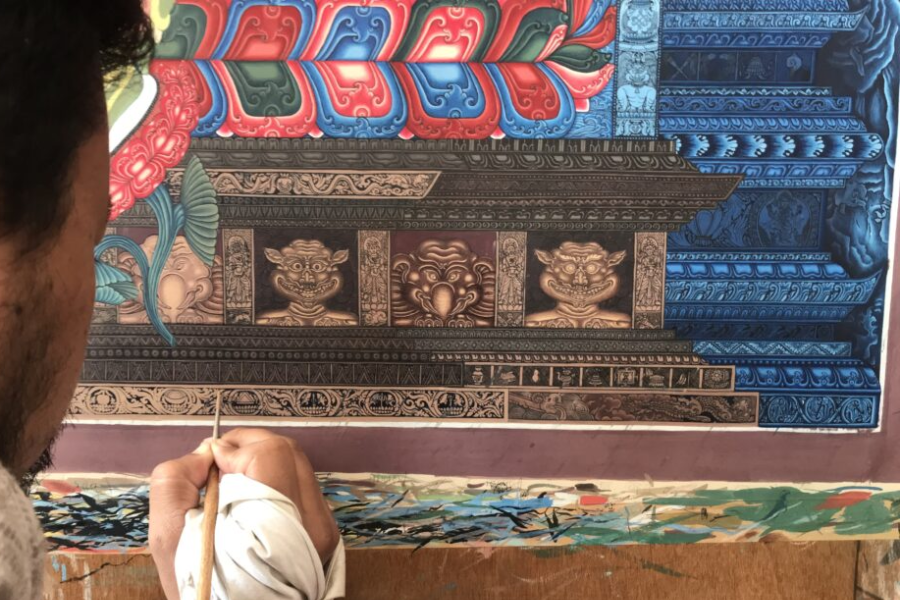
- 10 Dec, 2024

The creation of a Paubha painting is a detailed and precise process that requires immense skill and patience. Every step, from the preparation of materials to the final brushstroke, is rooted in centuries-old traditions that have been passed down through generations. In this blog, we will take a closer look at the art of creating Paubha, shedding light on the painstaking craftsmanship involved in each piece.
The process begins with selecting high-quality materials such as cotton or linen for the canvas. Artists often stretch the fabric over wooden frames and prepare it to ensure it’s smooth and ready for painting. Natural pigments are then mixed with water or other binders to create vibrant colors that are used in the painting. These pigments come from a variety of sources, including minerals, plants, and even precious stones, ensuring that each artwork retains its rich vibrancy over time.
Once the canvas is ready, the artist begins by sketching the basic outlines of the design. This is followed by filling in the details with careful, precise brushwork. Paubha artists employ traditional techniques that require years of training to master, ensuring that each element of the artwork is harmonious and accurately reflects the symbolism and meaning behind the subject matter. Whether it’s a depiction of a deity, a scene from Buddhist mythology, or a complex mandala, every stroke is carefully calculated.
The final step involves the application of gold leaf or other metallic elements, adding a touch of elegance and enhancing the spiritual significance of the artwork. The painting is then framed and ready for display. The journey of creating Paubha art is not just about producing a beautiful painting—it is an expression of devotion, artistry, and cultural preservation, making each piece a true masterpiece.
Comments (0)